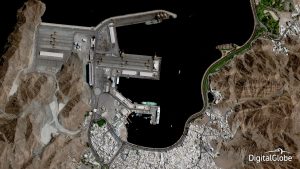
DigitalGlobe has released a selection of GBDX NoteBooks that will give different customer groups access to a wealth of valuable information from across the company’s Geospatial Big Data platform (GBDX) and is also offering a selection of tutorials on how to use them.
The Notebooks were initially created for developers, data scientists, imagery scientists, and machine learning and deep learning researchers but they will now be accessible to a much broader variety of users such as the insurance, automotive, energy, and technology industries, enabling them to solve complex problems and to make rapid and well-informed decisions based on the data.
The Notebooks, which use the familiar open source Jupyter Notebooks environment, will provide access to DigitalGlobe’s 18-year, 100 PB library of high-resolution, multispectral imagery, as well as pre-built machine learning and remote sensing algorithms. Customers will choose from three e-commerce subscription levels on top of which GBDX Notebooks offer a community tier, furnishing customers with ready access to the latest imagery from NASA’s Landsat satellite, ESA’s Sentinel satellite, DigitalGlobe’s Open Data Program, and DigitalGlobe’s complete IKONOS archive.
Using one of the three available e-commerce tiers, customers can develop and run at scale proprietary algorithms, Maxar-developed algorithms, or open source algorithms, including:
Mapping Navigable Airspace for Drones: By combining DigitalGlobe’s imagery, digital surface models, a tree detection model, and Ecopia Building Footprints powered by DigitalGlobe, this GBDX Notebook visualizes obstructions that would impact the flight paths of drones and UAVs, solving a key problem for the emerging drone and UAV navigation sectors.
Assessing Forest Fire Risk to Buildings: Calculating by hand the fire risk for every building in a city would be a time-consuming task. This GBDX Notebook combines high-resolution satellite imagery, building footprints, Normalized Difference Vegetation Index (NDVI) to determine plant health, a tree detection model, and defensible space standards to quickly identify which buildings would have a high risk of burning in the event of a wildfire, helping a city determine where to focus its fire mitigation efforts.
Change Detection for Boat Traffic: This GBDX Notebook combines feature extraction, change detection over time, and open source weather data to find business insights from imagery, specifically helping businesses identify when to expect more customers.
GBDX Notebooks represents a new and powerful component of a comprehensive machine learning platform for satellite imagery providing training data, an imagery chipping service, labeling tools, and high-speed imagery inference.
 SpaceWatch.Global An independent perspective on space
SpaceWatch.Global An independent perspective on space




